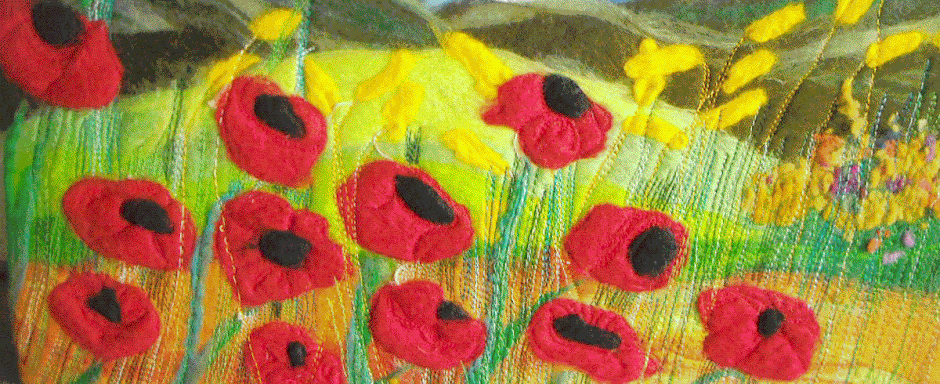Hello everyone. Those of you who read my last post will know that I am making a blanket from nuno felt using muslin and fleece from my own sheep. I am using fleece from different coloured sheep and also dying some of the white with natural colours.
I have tried dying with plant material before but without much success. This is probably down to the fact that I am too impatient to let things soak and simmer for as long as I should. This time I was determined to do it properly. I consulted a book I have and would recommend called 'wild colour' to see what plants I can use in winter when not much is growing. One of the things that caught my eye was pomegranate because I had one in the fruitbowl. Surprisingly it is the skin, not the seeds which yield the colour and it gives a yellow.
I ate the seeds and then bashed the skin a bit with a rolling pin. I then bought it to a boil and left it to simmer for an hour. It then had to be left to soak overnight. Leaving something overnight is like torture because I want to do it NOW but I did leave it. In the meantime I used Alum as a mordant on the felt.
Next morning the water in the pan was , sure enough, yellow. Very yellow! I removed the skin and replaced it with the felt. Again more simmering, boiling and soaking. By evening the felt was a strong mustard colour. I added a little vinegar and reheated it which brightened the yellow slightly until I had this.

Next I decided to do some tea dying as I know from experience it is easy and fairly quick. I still had some felt with the alum mordant in it and used that but I think tea dye would remain colour fast even without it. I made a jug of tea with three teabags and immersed the felt in it. I expected to leave it overnight but after a couple of hours I went to stir it and discovered it had turned a lovely brownish rose colour so I took it out and rinsed it then. If left longer it would have been darker. Here is the tea dyed cloth.

In reality this cloth is a little darker than the photo and has a rosy glow to it but I just couldn't get the photo the right colour. Trust me it's really nice.
I did try one other piece but it was a failure. I used cherry bark which should have given me a pink colour. It did but only just. It is so pale that unless held against white you wouldn;t notice the colour at all. I think I didn't use enough bark because I didn't want to damage the tree. I should have weighed the cloth and used twice the weight in bark but I didn't weigh either. I will overdye that poiece later.
When I have done some more I will keep you updated. Before long the nettles will be coming up and for once I will be pleased to see them because they are good for dying. I do have some berries in the freezer left from last autumn so I might give those a go. For now I will enjoy stitching the pieces I have already made.



